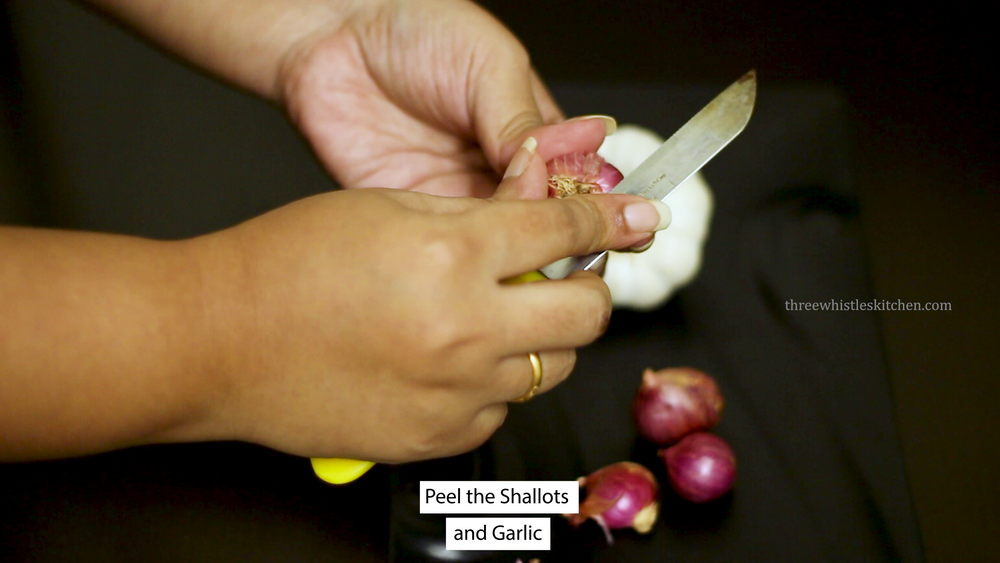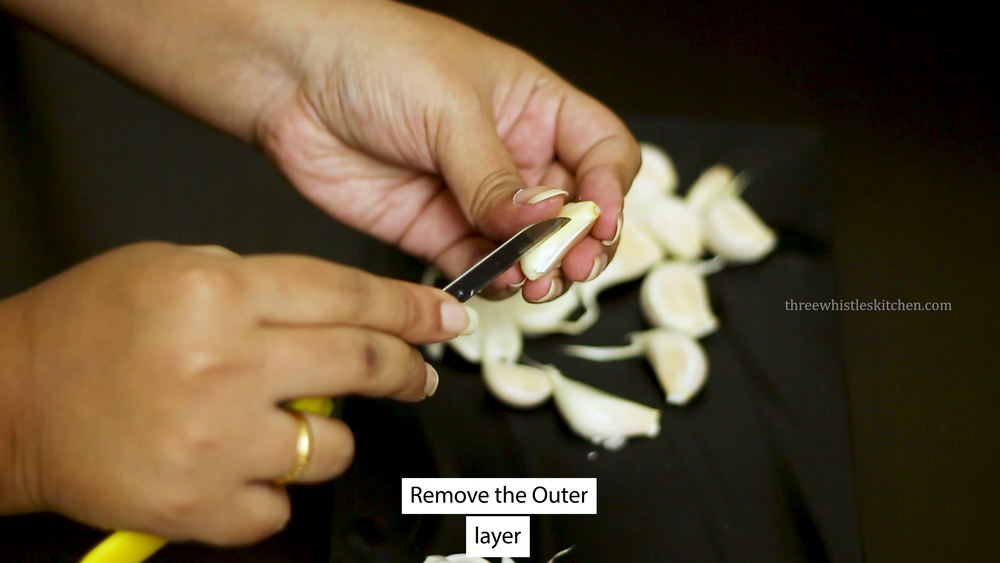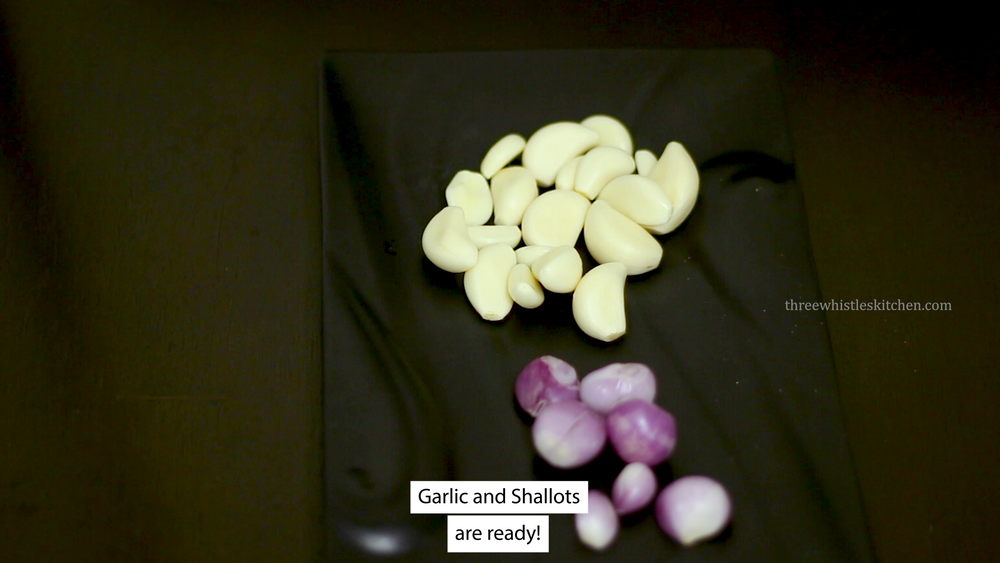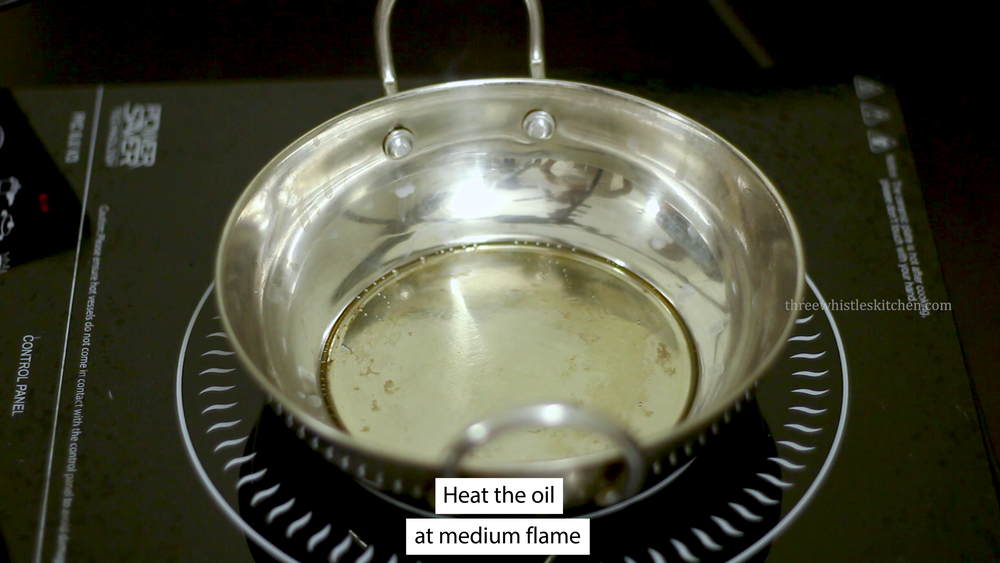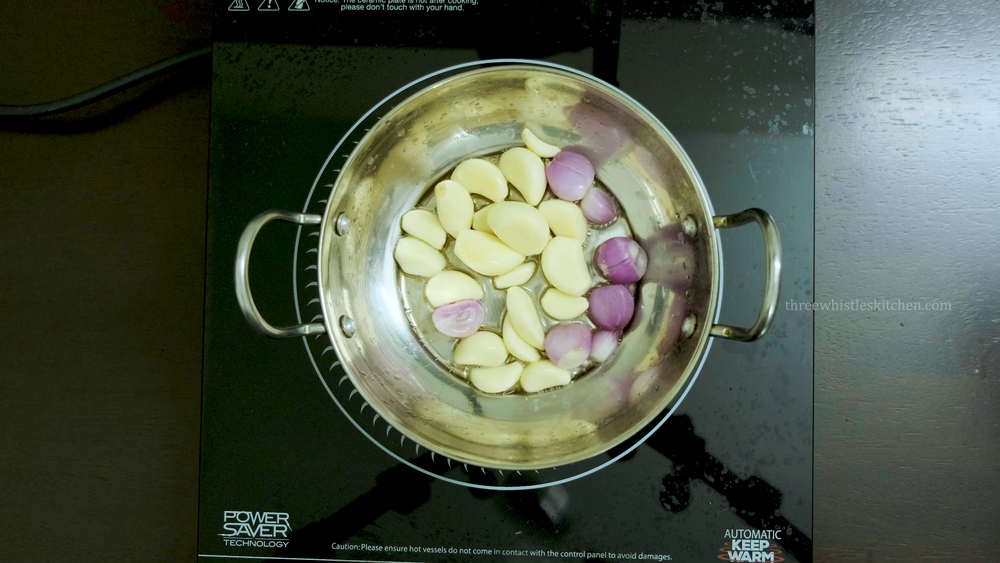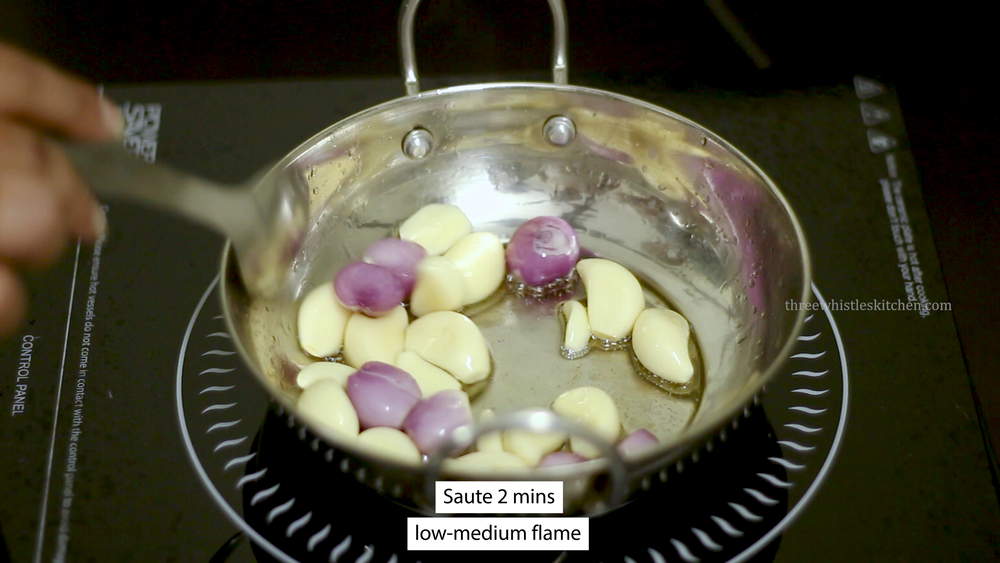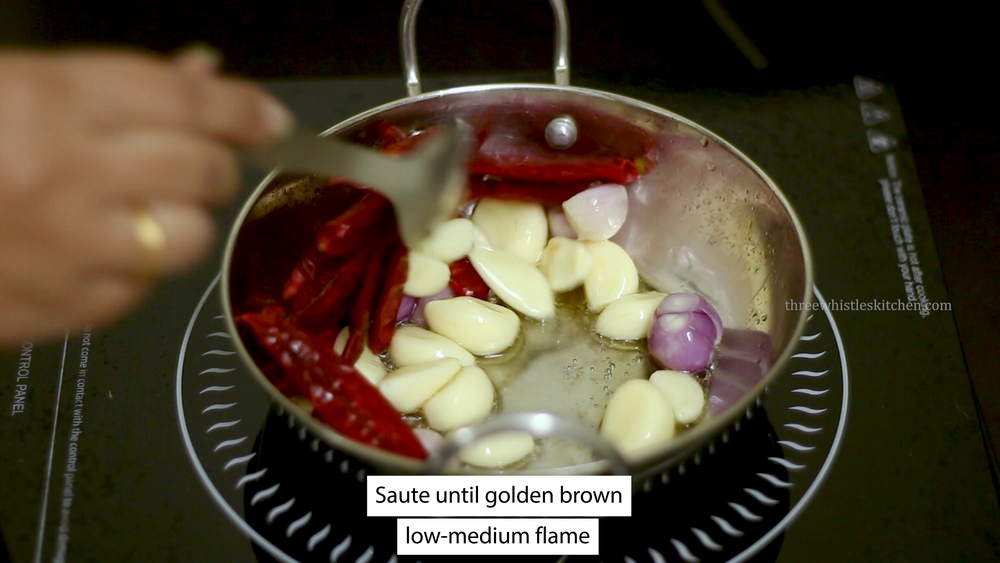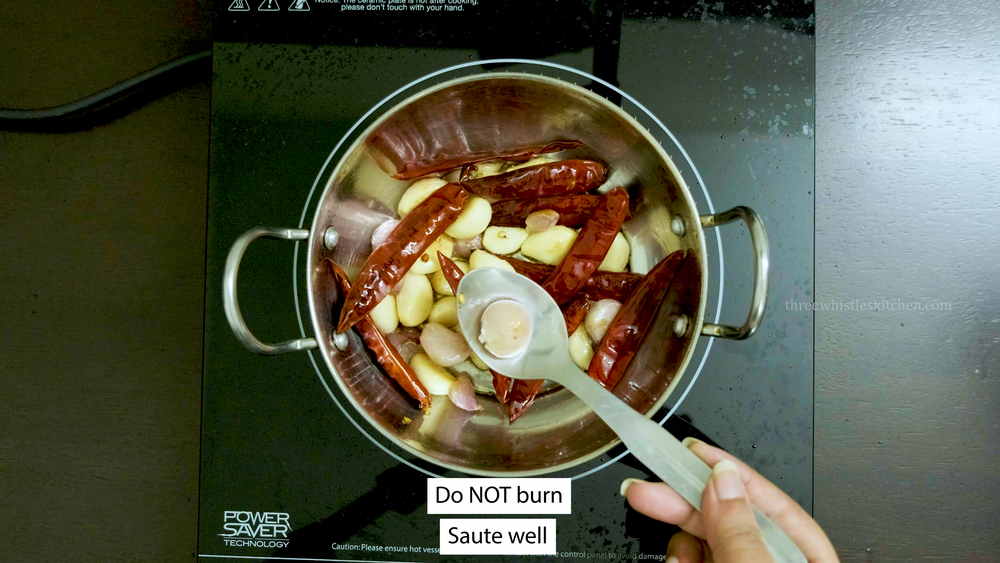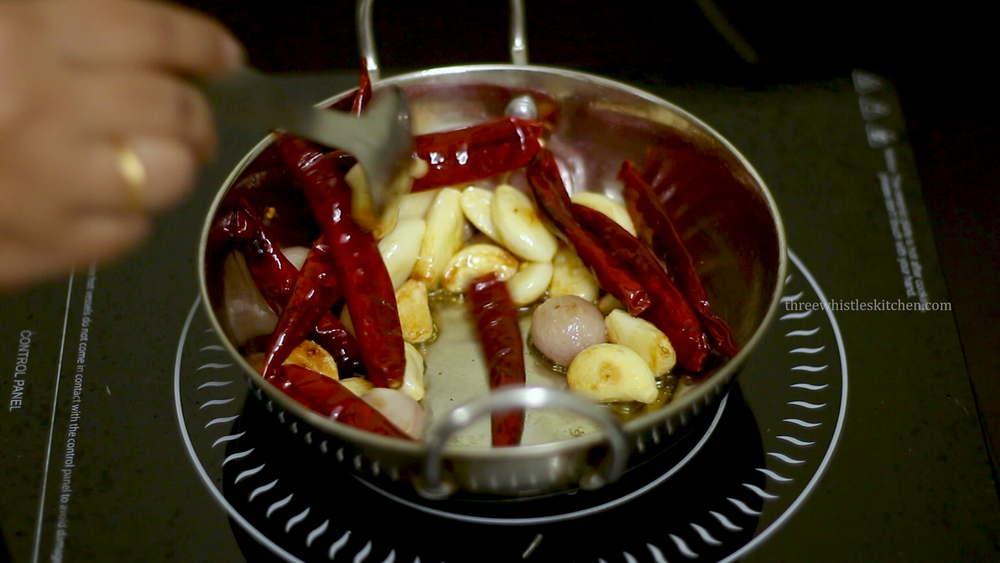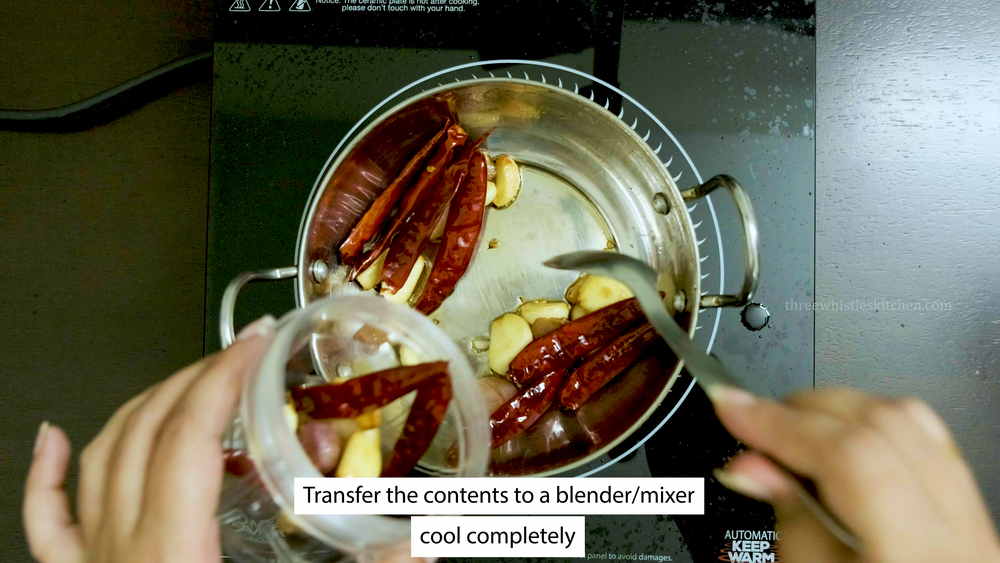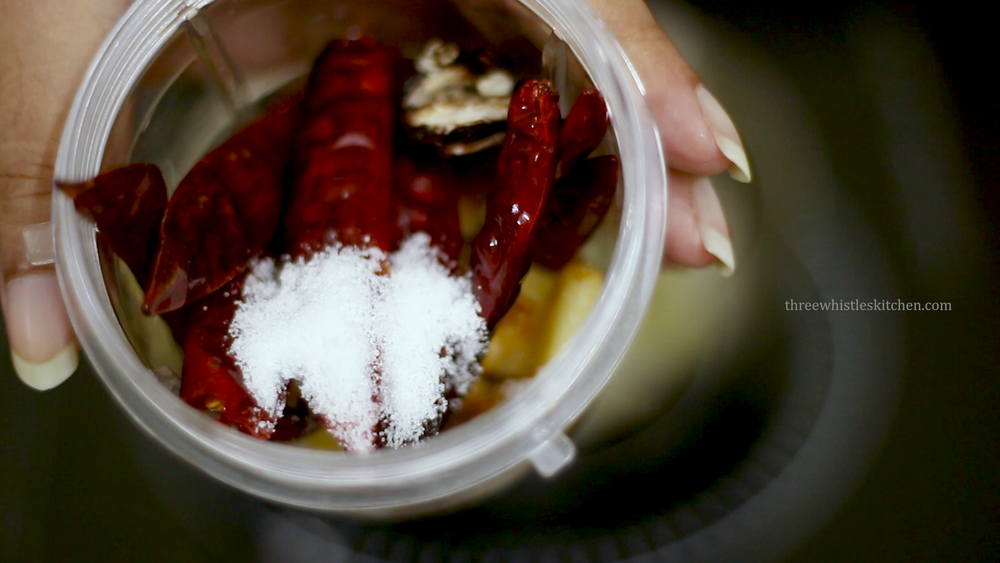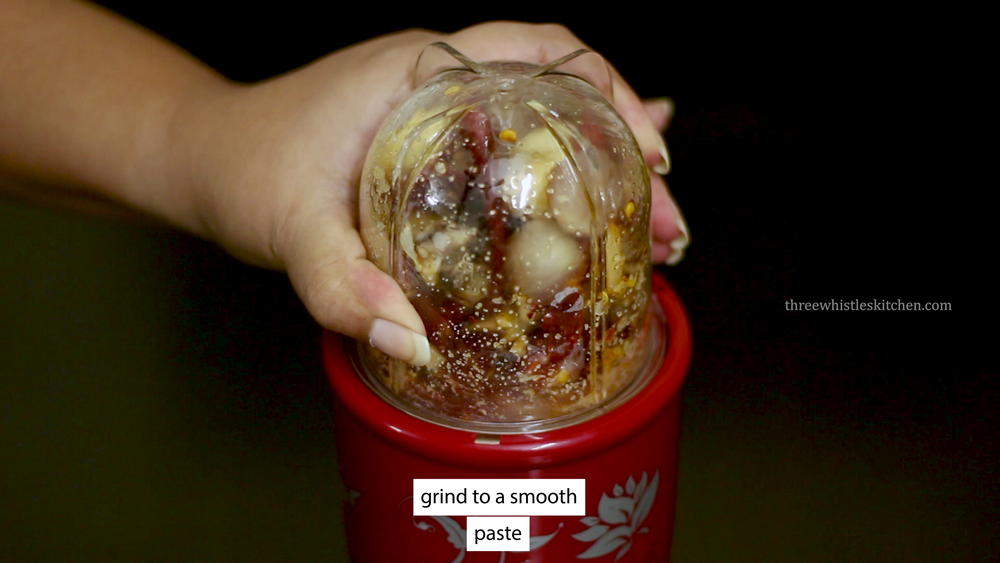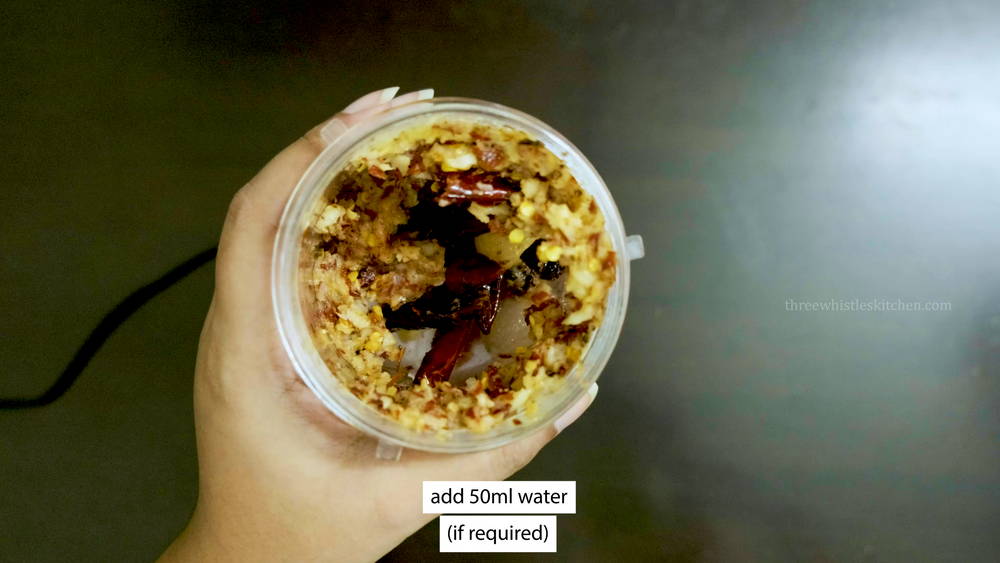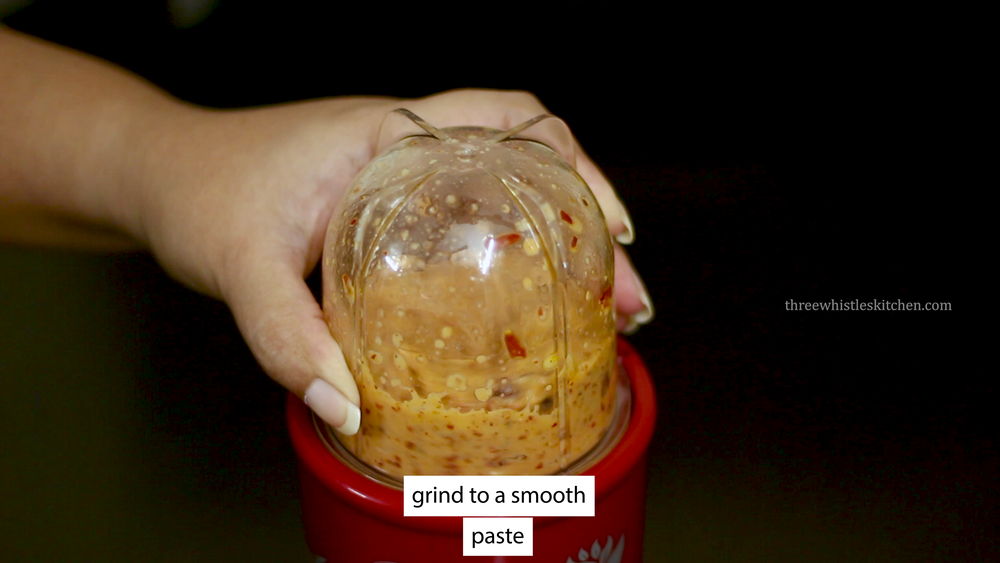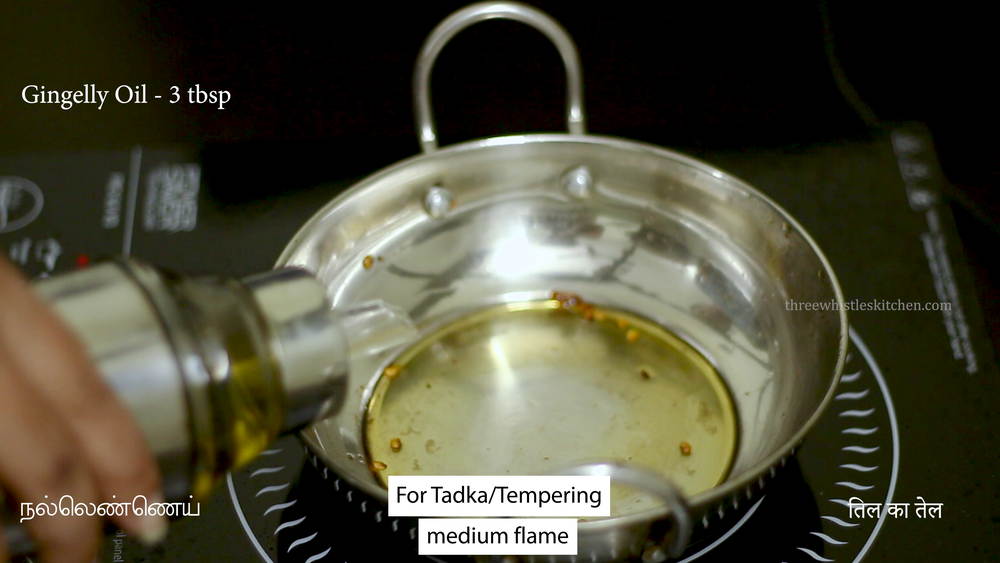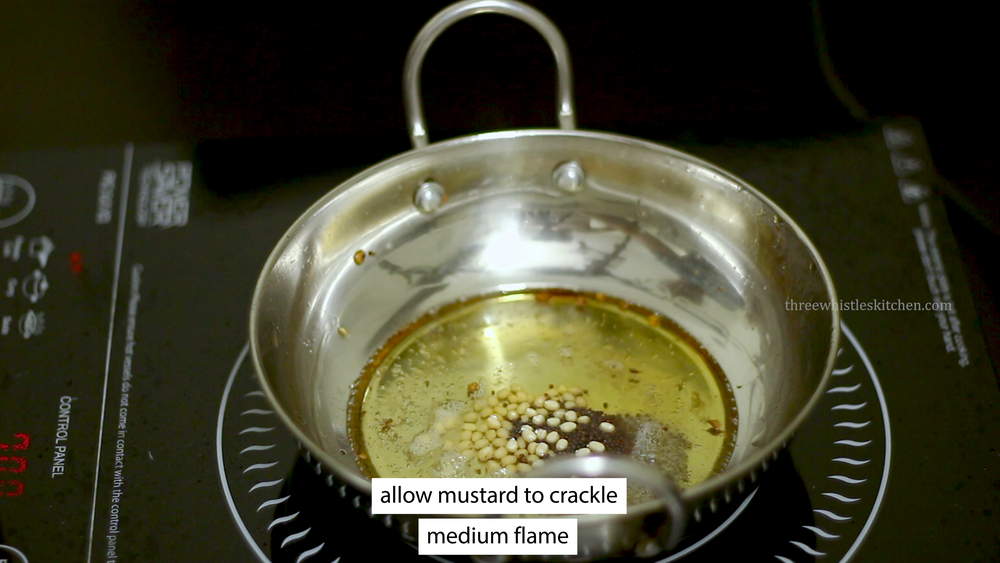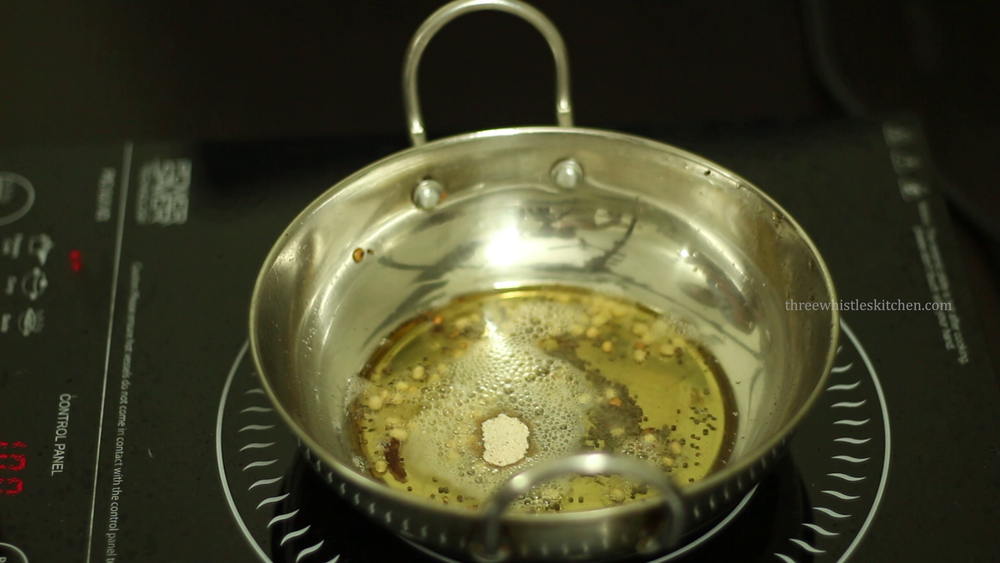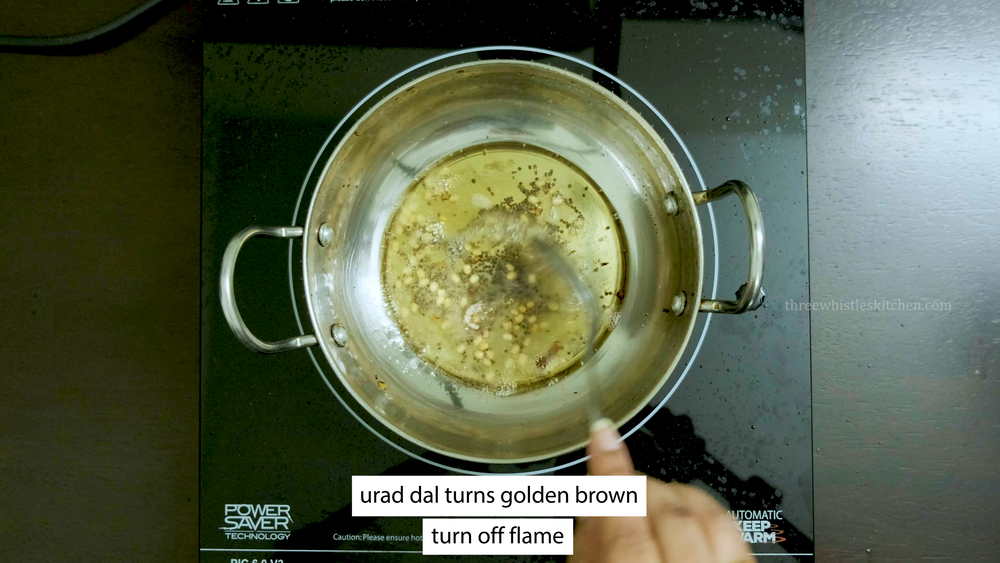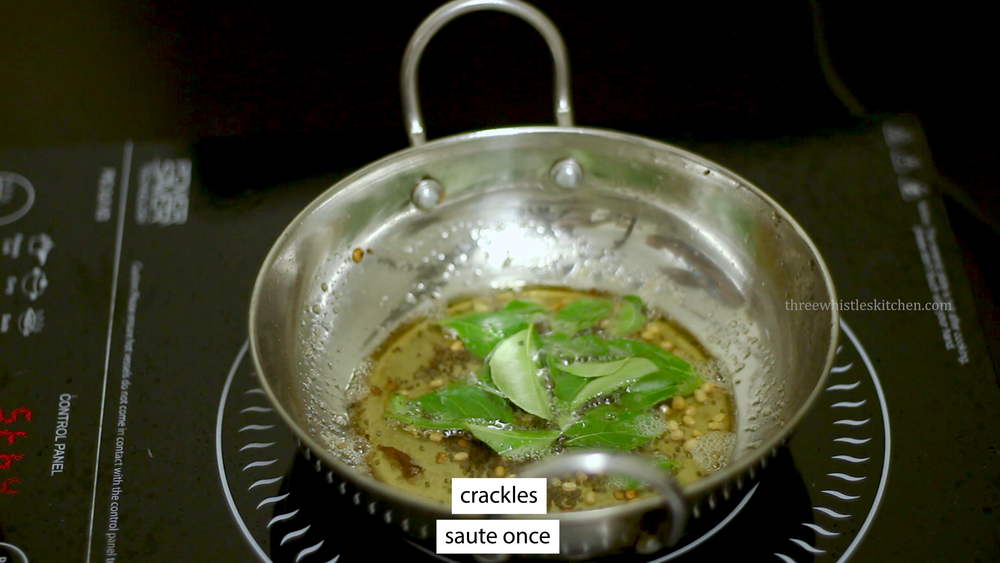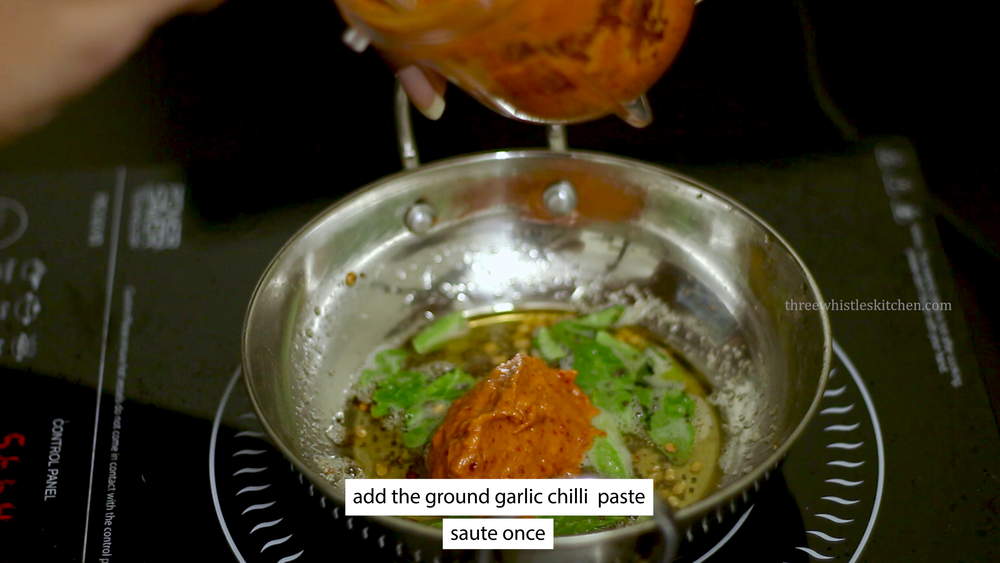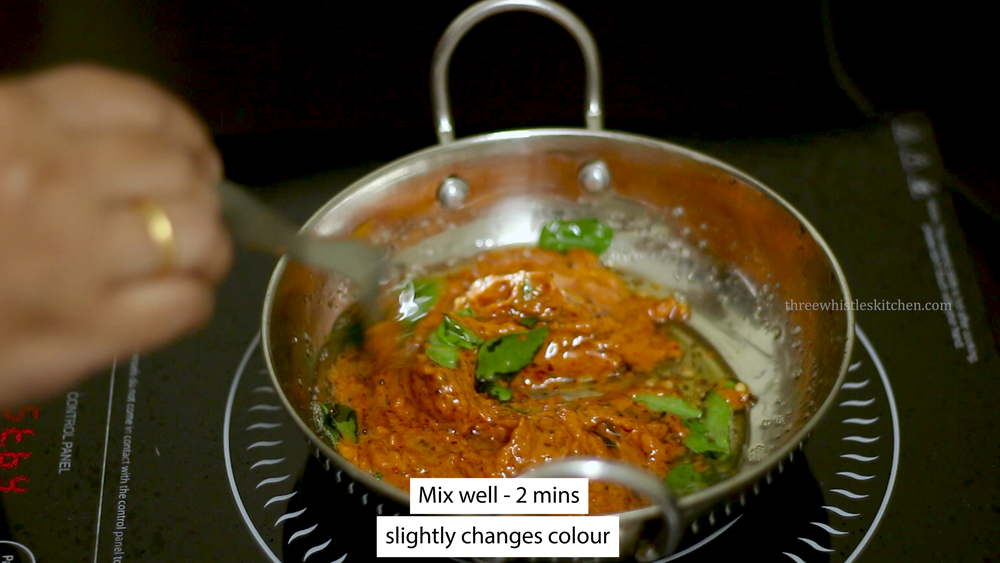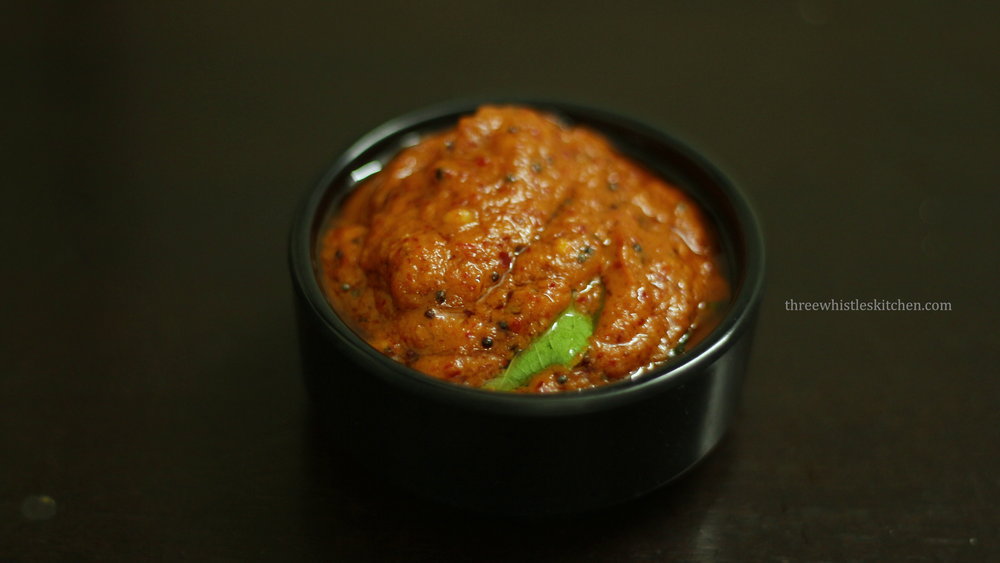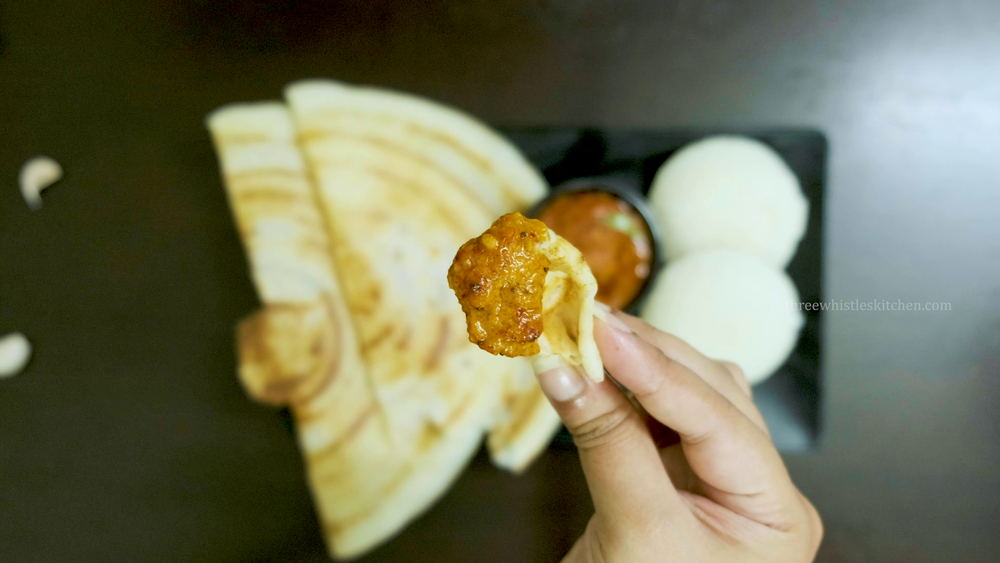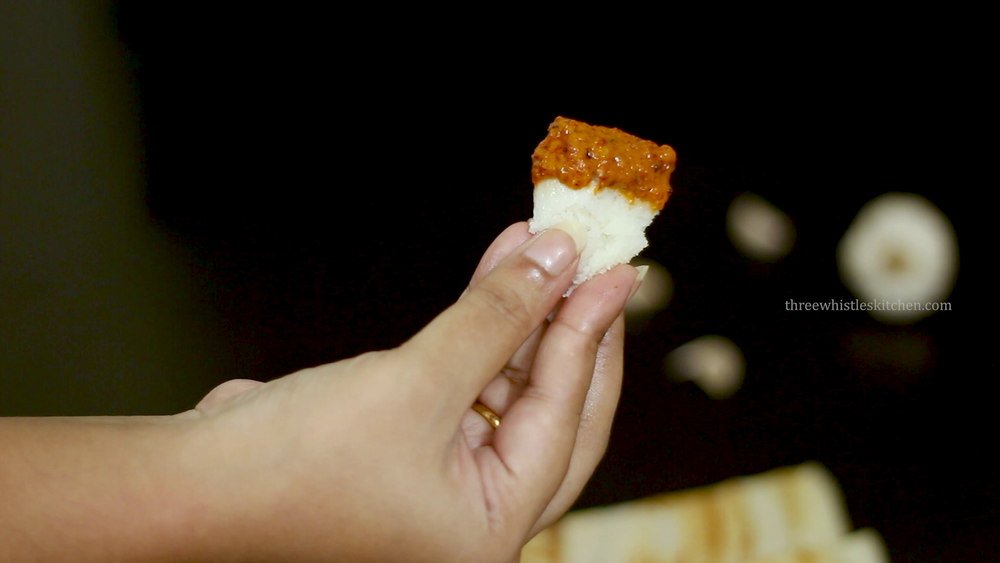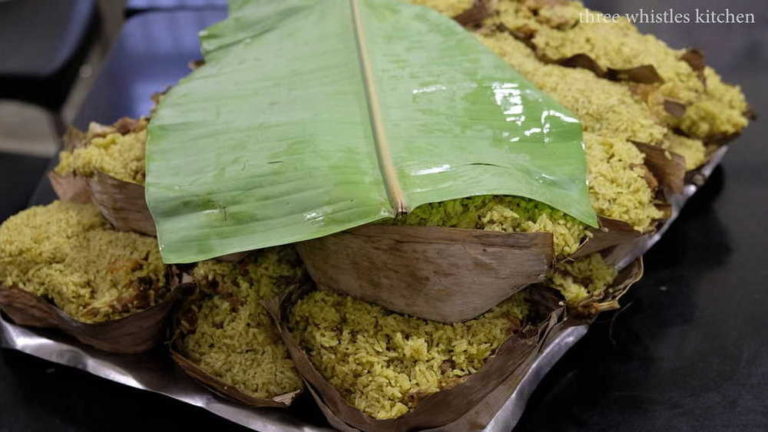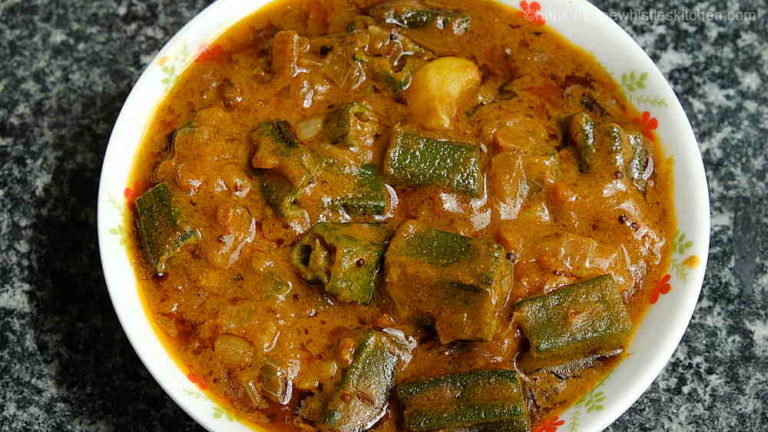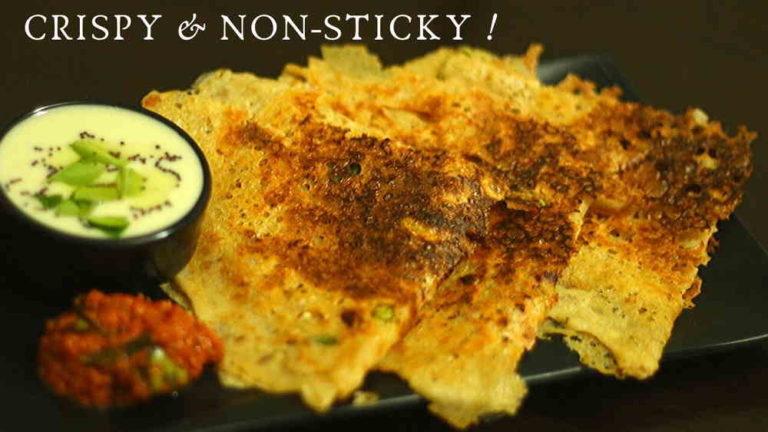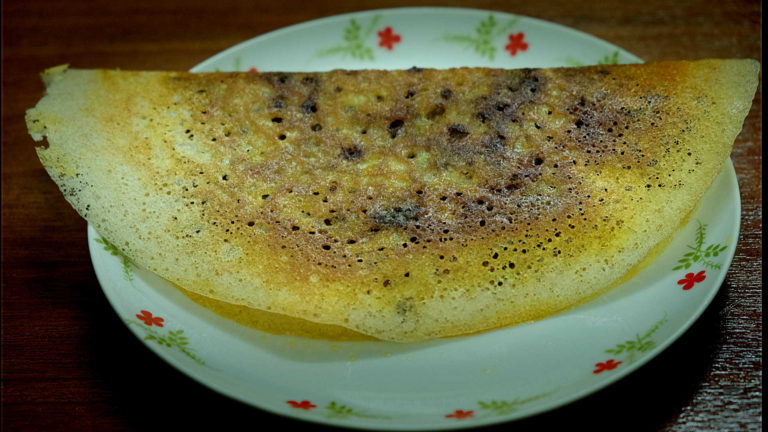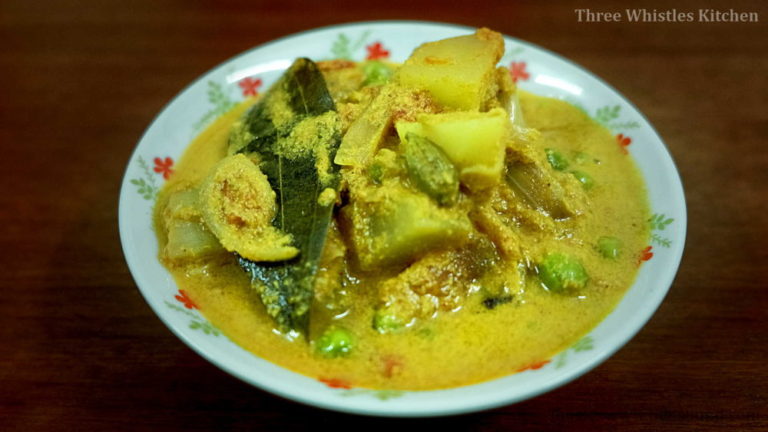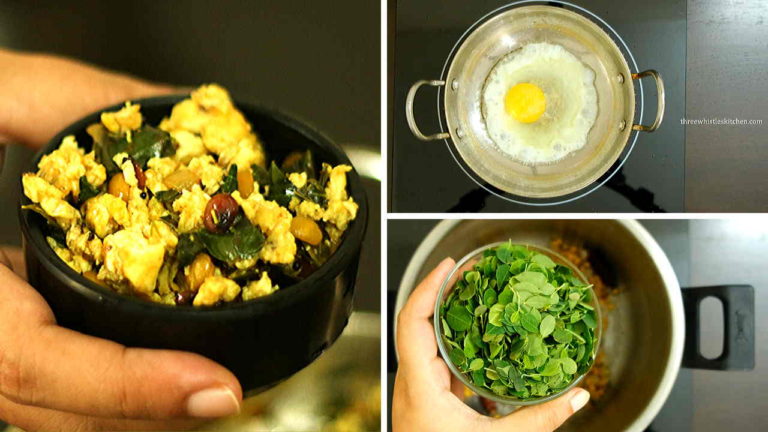Poondu Chutney | (SPICY & Tangy) Garlic Chutney Side Dish for Dosa, Idli (+ Garlic Cooking Tips)
If you are looking for a QUICK and HEALTHY side dish for dosa and idli – Garlic Chutney(Poondu Chutney) is a very good choice.
Garlic related dishes should be cooked carefully, especially by the beginners. If not they will result in:
- Strong pungent Odour
- Might give burnt smell
- In spite of sauteing, can result in raw taste.
Today I will show you how to make garlic chutney. At the same time, I will also share tips for cooking garlic, its maintenance and how to get the poondu chutney taste right.
And, if you are a Garlic lover, then this recipe will surely steal your heart.
Garlic chutney is a simple, spicy and tasty South Indian Chutney/dip variety. It goes well with Dosa and Idly for breakfast and dinner.
Most importantly, this poondu chutney is a time-saver recipe for all those busy men and women.
Let’s get started!
What is Poondu Chutney/Garlic Chutney Recipe?
Poondu Chutney/Garlic Chutney is a spicy condiment cuisine popular in Tamilnadu. This poondu chutney is prepared using fresh garlic pods and red chillies and is finally tempered with mustard, deskinned black gram (urad dal), curry leaves and hing.
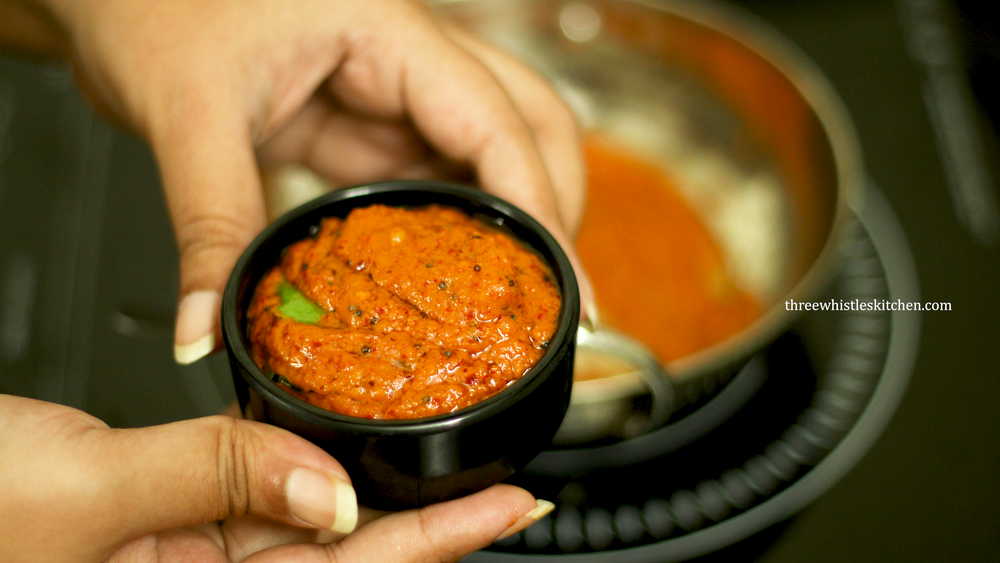
This is a very simple recipe due to the fewer number of ingredients used. I love to taste this chutney with dosa for breakfast.
If you like to taste some tangy flavoured chutney, then you can add a small piece of tamarind to the recipe.
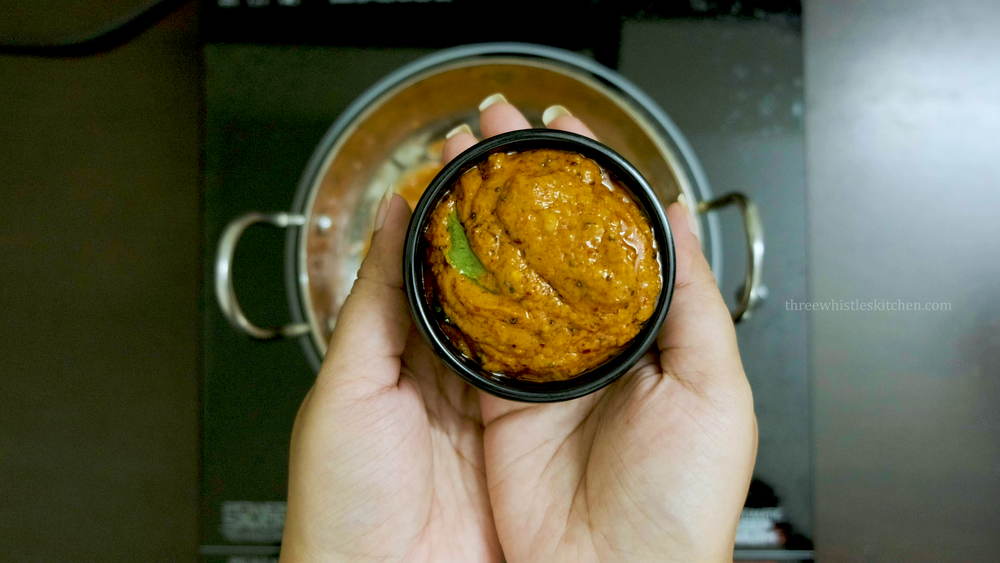
All the ingredients are sauteed in gingelly oil until the garlic turns slightly golden brown in medium flame.
What is Raw Garlic Chutney?
Raw Garlic Chutney is similar to garlic chutney, except that you need not saute the ingredients in oil. You can directly grind/blend the ingredients together in a blender or pound it using a mortar & pestle for that traditional touch & taste. Finally, it is tempered with oil, mustard, urad dal, curry leaves and hing.
Video Recipe: How to make Poondu Chutney
New to Indian Cooking?
If you are a beginner or someone who is not sure on how to get started in Indian Cooking, please click on the below links for STEP By STEP GUIDE.
1. Essential Indian Cooking Tools – A Complete Guide for setting up basic Indian Equipment for cooking.
2. Essential Indian Spices – A Comprehensive Guide explaining the basics of Indian Spices which are Important for cooking Indian Foods.
3. How to Cook Rice Perfectly – Learn to Cook Indian Rice using 2 methods – Pot and Pressure Cooker
What is Poondu (garlic)?
Poondu/Garlic is a white coloured bulb-shaped herb. It usually has many segments in it called a clove. A garlic bulb approximately contains 10-20 cloves.
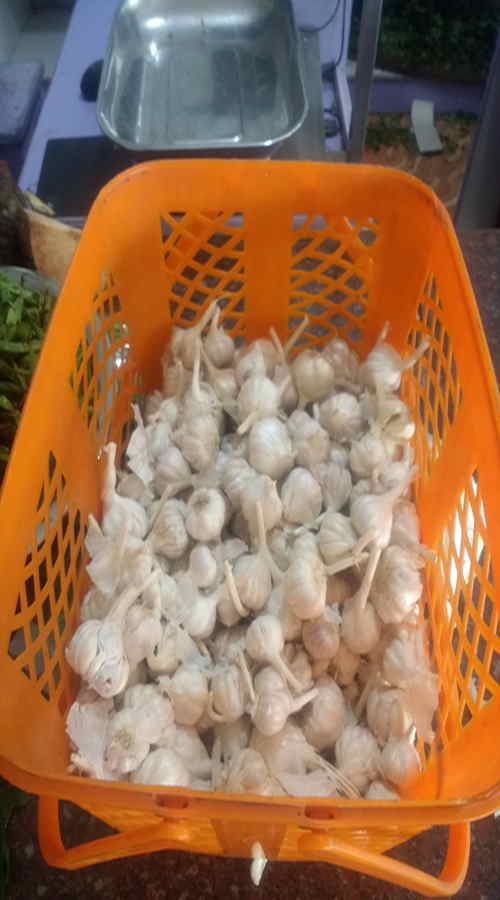
Garlic is a key ingredient in most of the Indian Cuisines due to its rich flavour and medicinal properties.
Also, poondu/garlic is related to the onion family, hence it has a very pungent and strong flavour.
Garlic in different Indian languages (is known as):
- Poondu in Tamil
- Lehsun/Lasun in Hindi
- Bellulli in Kannada
- Vellulli in Telugu
- Veluttulli in Malayalam
Different types of Poondu/Garlic
Different regions in India or Outside India cultivate different varieties of garlic. It completely depends upon the climatology and landscape of the region.
There are basically 3 types of Garlic/Poondu available in South India.
- Solo Garlic: It has only a single clove in each garlic bulb. It has a strong hard neck and a mild flavour.
- Mountain garlic: It is usually imported from the mountainous regions to other parts of the country. Each garlic bulb has about 8-12 cloves. Each clove is about the size of solo garlic. It gives great flavour and also reduces the peeling time.
- Small Garlic (Rasam garlic): This garlic has a smaller and thin clove compared to the other varieties. Usually, these garlics are used with the skin as it is very flavourful. You just have to cut the 2 ends of the clove and just wash and use it right away. These garlic cloves are crushed along with cumin and black pepper to prepare Rasam recipe or Pickles or Thokku varieties.
What Type of Poondu to use for Garlic Chutney?
Generally, solo garlic or mountain garlic or any other variety of garlic that has bigger clove can be used as it will enhance the taste of this recipe.
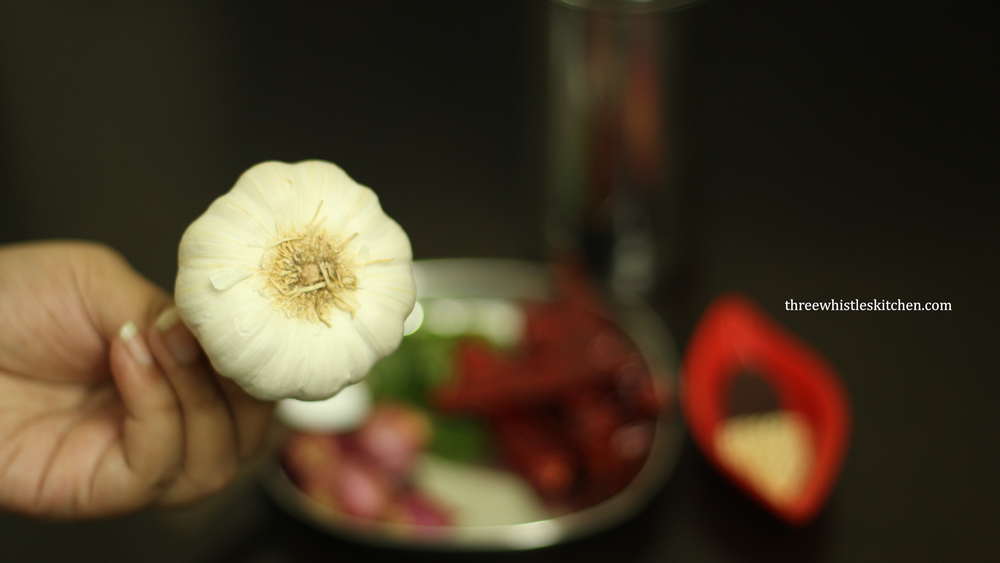
South Indian Chettinad Poondu chutney vs North Indian lasun chutney
South Indian Chettinad Poondu Chutney is the same as poondu chutney. It is prepared using garlic cloves, red chilly, tamarind(optional), onion (optional). Finally, it is tempered with oil, mustard, urad dal, curry leaves and hing.
North Indian Lahsun Chutney is almost similar to the South Indian Poondu Chutney, except that a little sugar and ginger is added to the recipe instead of tamarind while grinding. Also, cumin is included while tempering in the final stages.
Related DELICIOUS Dishes!
Try our Spicy South Indian Chettinad special Poondu Kulambu/Garlic Curry Recipe.
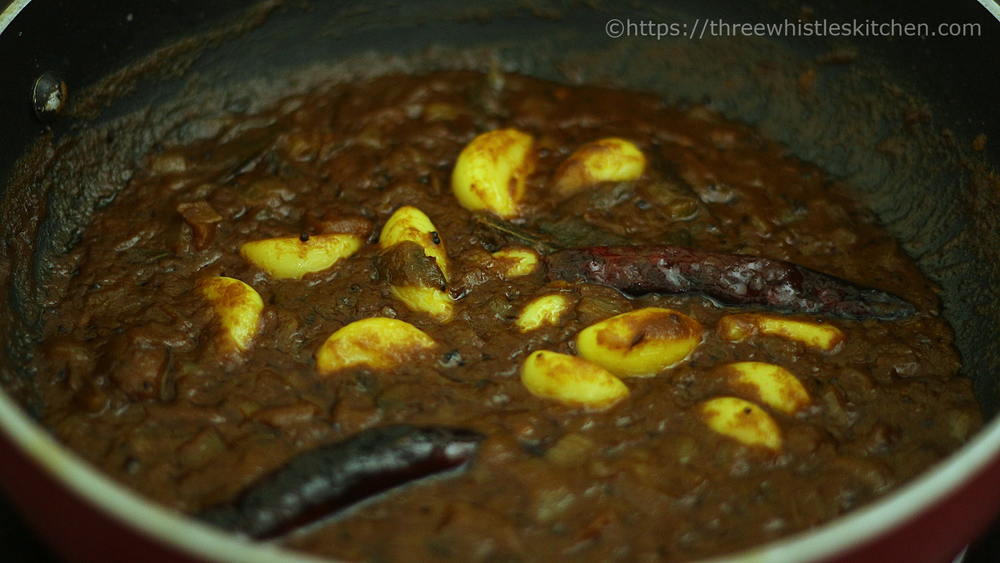
Vendakkai Kara Kulambu/Bhindi Curry
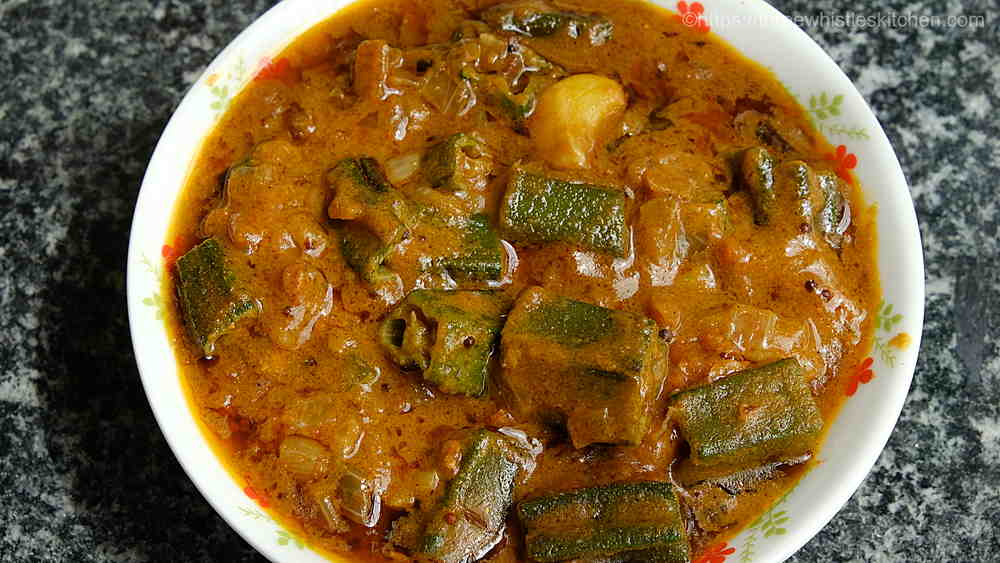
Health Benefits of Poondu/Garlic
- Low in Calories
- Improves Cholesterol levels thereby reducing heart diseases.
- Reduces Blood Pressure
- Helps prevent & reduce the severity of common cold
- Highly Nutritious
- Improves Bone Health
Garlic Chutney Ingredients:
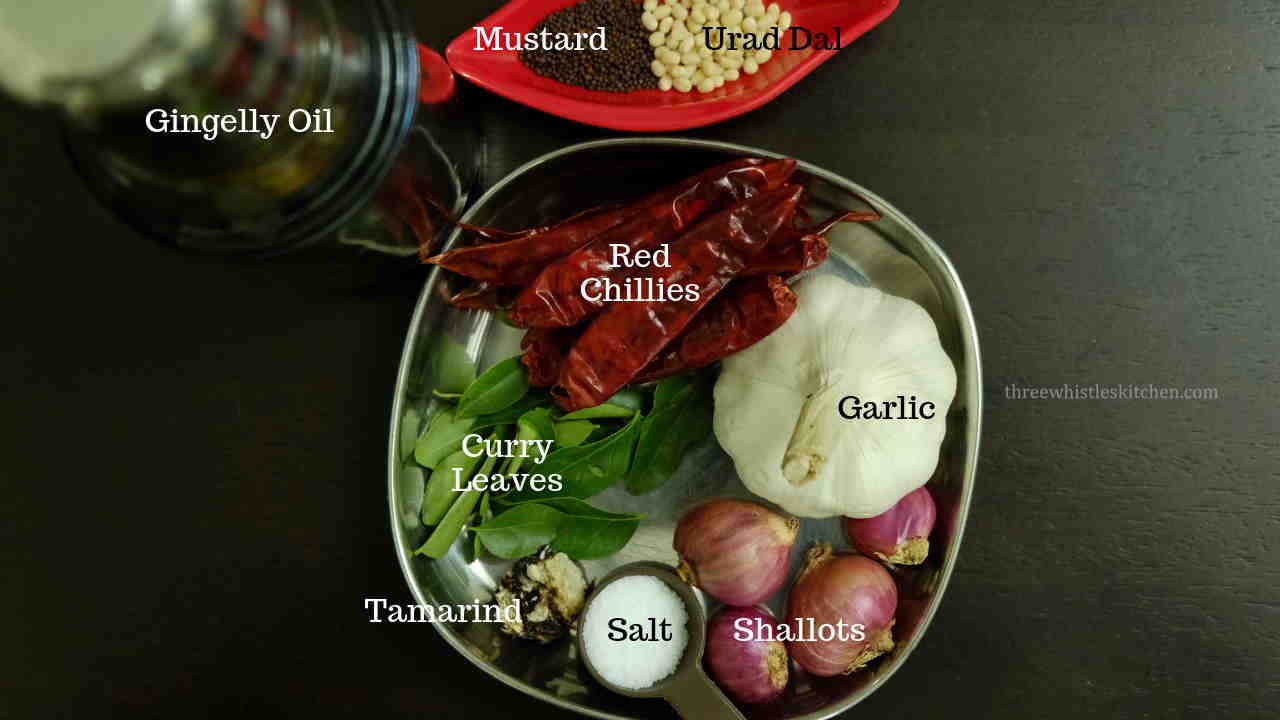
- Gingelly Oil
- Shallots (small onions)
- Garlic
- Red Chilli
- Salt
- Tamarind – small piece
- Water – if required
- Mustard
- Urad dal
- Hing/Asafoetida
- Curry leaves
How to Make Poondu Chutney
Peeling
- Peel the shallots and garlic. Keep aside.
Sauteing
2. In a kadai, add gingelly oil and allow it to heat. Once the oil is hot, add the peeled garlic and shallots. Saute for 2 minutes on low-medium flame.
3. Add the red chillies and continue sauteing until garlic turns golden brown. Do NOT saute in high flame and burn it.
Grinding
4. Transfer the contents to a blender or mixer. Allow it to cool completely. Once cooled, add salt and tamarind into the blender. Grind to a smooth paste.
5. Pour a little water if required and grind to a fine smooth paste.
Tempering/Tadka
6. For tempering/tadka – heat gingelly oil in the same kadai and then add mustard and urad dal. Allow the mustard to crackle.
7. Add hing/asafoetida. Mix once. Once the urad dal turns golden brown, turn off the flame. Add curry leaves and saute once.
8. Add the blend garlic chilli paste to the kadai and combine well with the tadka. You will notice the colour of chutney slightly changes.
9. Garlic chutney/Poondu chutney is ready to be served.
10. Tastes delicious with Crispy Dosa and Fluffy Idly for breakfast/dinner.
Different Variations of Poondu Chutney
- Onion Garlic Chutney: This chutney recipe contains 3 part onions and 1 part garlic/poondu with red chilly as the main ingredients.
- Thakkali Poondu Chutney: This recipe contains 3-4 part tomatoes and 1 part garlic/poondu with chilly as the main ingredients.
- Tomato Poondu Chutney: This is the same as thakkali poondu chutney. Tomato is thakkali in tamil language.
- Milagai Poondu Chutney: This recipe is the same as poondu chutney. It uses red chilly known as milagai in tamil and hence the name milagai poodu chutney.
- Kara Chutney: Kara chutney recipe uses onions, tomatoes, red chilly, coconut and fennel seeds as the main ingredient.
- Poondu Thokku: This recipe is similar to a pickle/condiment where smaller sized garlics are used along with tomato puree/paste and is allowed to cook in simmer until oil separates. This recipe uses the garlic clove as a whole and doesn’t grind it to a paste.
Poondu Chutney for dosa / spicy chutney for dosa
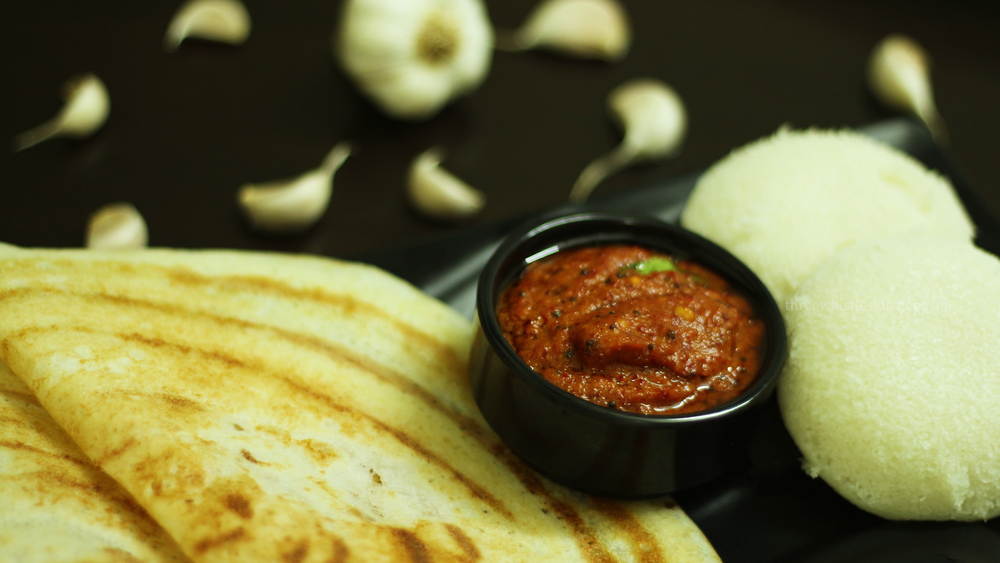
This poondu chutney is said to be one of the BEST, SIMPLE and TASTY chutney/dip for dosa. It can be prepared in less than 10 minutes.
This garlic chutney is so spicy and feels absolutely divine to taste with crispy dosas or even with ghee roast.
Garlic Chutney for Idli
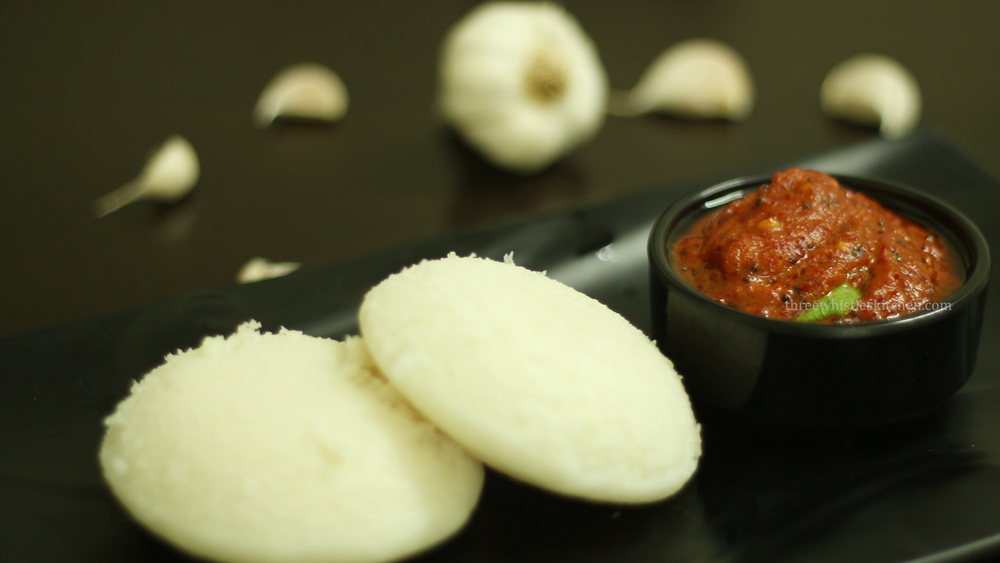
Since Idly is a dish that has no taste or is just plain, it tastes awesome when eaten with SPICY garlic satni/dip. It is an easy and quick breakfast/dinner fix.
How to Store Poondu Chutney
Poondu chutney can be stored in the refrigerator for about a month provided you follow the below steps carefully:
- Use 4-5 tbsp of gingelly oil while making tadka/tempering for the chutney.
- Use a glass jar to store the garlic/poondu chutney in refrigerator.
- Always use a dry spoon to scoop the chutney in order to keep it fresh for weeks.
Frequently Asked Questions
Q. How long will this chutney stay good in the fridge?
Garlic/Poondu chutney can be stored for a month in the refrigerator provided you add more gingelly oil (like in pickles) and keep it moist free.
Q. Instead of small onions can we use big onions?
Yes. You can use big onions instead of small onions. But, using small onions or shallots enhance the taste of the chutney.
Q. Which oil should be substituted for gingelly oil?
You can use groundnut oil or refined sunflower oil if gingelly/sesame oil is not available.
Q. What to do if Garlic flavour is dominant or if it has raw garlic smell ?
It means you did not properly sauteed garlic before grinding it to a paste. To rectify it you can follow the below steps:
- After grinding cook in low flame along with the tadka/tempering for about 5 minutes in low flame.
- Add some more onions (1/2 big onion or 3-4 small onions) and grind again and then saute for 5 minutes in tadka.
Q. While tossing garlic, how to avoid burnt smell?
As you are frying the garlic in oil, it will not get burnt unless you fry it in high flame. Make sure to fry it only until golden brown.
Q. Can we use tamarind paste if we don’t have tamarind?
If you don’t have tamarind, add 1/4 tsp of tamarind paste.
Recipe Card – Poondu Satni/Garlic Chutney/Lasun Chutney
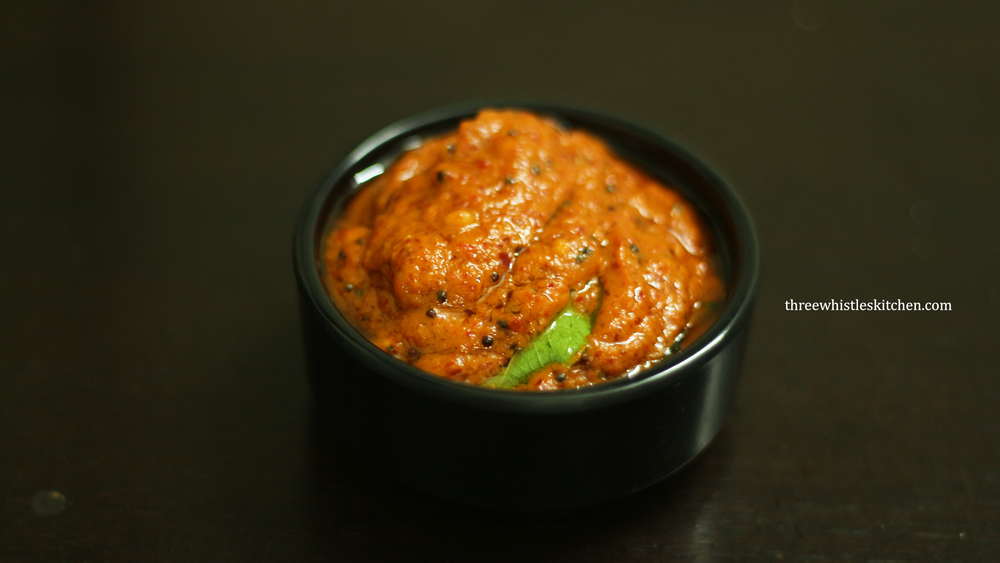
Ingredients
- For Sauteing & Grinding
- 2 tsp Gingelly Oil
- 4-5 nos Shallots (small onions)
- 15-20 nos Garlic
- 8-10 Red Chilli
- 3/4 tsp Salt
- Tamarind - small piece
- Water - if required
- For Tempering/Tadka
- 3 tbsp Gingelly Oil
- 1/2 tsp Mustard
- 1/2 tsp Urad dal
- 1/2 tsp Hing/Asafoetida
- Few Curry leaves
Instructions
For Sauteing & Grinding
- In a kadai - add Gingelly Oil, Shallots, Garlic & Red Chilli.
- Saute well until garlic turns golden brown. [low-medium flame]
- Add the sauteed contents to a blender along with salt and tamarind.
- Cool completely.
- Add water, if required and grind to a fine smooth paste.
For Tempering/Tadka
- In the same kadai - Heat Gingelly Oil, Mustard, Urad dal. [medium flame]
- Allow mustard to crackle.
- Urad dal turns golden brown.
- Add hing, mix well and turn off the flame.
- Add a few Curry leaves, let it crackle.
- Pour in the ground garlic chilli paste and combine well with the tadka ingredients.
- Serve with crispy dosa or fluffy idly.

